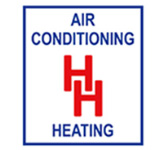The windows throughout your home are a gateway to the outdoors, a way to let light in when you take in the view of your garden, yard or other surroundings. The last thing you would want to see is a sweaty window coated in a layer of condensation.
Not only are windows coated in condensation unappealing, they also can be a symptom of a more substantial air-quality deficit inside your home. Thankfully, there’s numerous things you can do to correct the problem.
What Causes Condensation on Windows
Condensation on the interior of windows is formed by the humid warm air inside your home mixing with the cold surface of your windows. It’s particularly common during the winter when it’s much chillier outside than it is within your home.
Inside Moisture vs. In Between Panes
When talking about condensation, it’s important to understand the contrast between moisture on the inside of your windows compared to moisture in between the windowpanes. One is an air-quality issue and the other is a window issue.
- Moisture within a window is produced from the warm damp air throughout your home forming on the glass.
- The moisture you find between windowpanes is produced when the window seal stops working and moisture slips between the two panes of glass, in which case the window should be repaired or replaced.
- Condensation in the windows isn’t a window situation and can instead be solved by fine-tuning the humidity inside your home. Many things produce humidity in a home, like showers, cooking, bathing or even breathing.
Why Condensation on Windows Can Be an Issue
Even though you might presume condensation inside your windows is a cosmetic issue, it could also be a sign your home has excess humidity. If this is the case, water might also be accumulating on window frames, cold walls or other surfaces. Even a slim film of water can cause wood surfaces to mildew or rot over time, fostering the growth of mildew or mold.
How to Decrease Humidity in Your Home
Not to worry, because there are several options for eliminating moisture from the air inside your home.
If you have a humidifier running inside your home – whether it be a smaller unit or a whole-house humidifier – lower it further so the humidity inside your home decreases.
If you don’t have a humidifier running and your home’s humidity level is high, think about getting a dehumidifier. While humidifiers adds moisture into your home so the air doesn’t become too dry, a dehumidifier extracts excess moisture out of the air.
Compact, portable dehumidifiers can absorb the water from a single room. However, portable units require clearing water trays and usually service a somewhat limited area. A whole-house dehumidifier will extract moisture from your entire home.
Whole-house dehumidifier systems are managed by a humidistat, which permits you to set a humidity level just like you would select a temperature with your thermostat. The unit will run instantly when the humidity level exceeds the set level. These systems work with your home’s HVAC system, so you will receive the best results if you contact experienced professionals for whole-house dehumidifier installation Mechanicsburg.
Alternative Ways to Lower Condensation on Windows
- Exhaust fans. Installing exhaust fans near humidity hotspots such as the bathroom, laundry room or above the stove can help by drawing the warm, moist air from these spaces out of your home before it can raise the humidity level inside your home.
- Ceiling fans. Turning on ceiling fans can also keep air circulating throughout the home so humid air doesn’t get trapped in one place.
- Opening your window treatments. Pulling open the blinds or drapes can reduce condensation by preventing the humid air from being trapped against the windowpane.
By lowering humidity across your home and moving air throughout your home, you can make the most of clear, moisture-free windows even in the winter.




